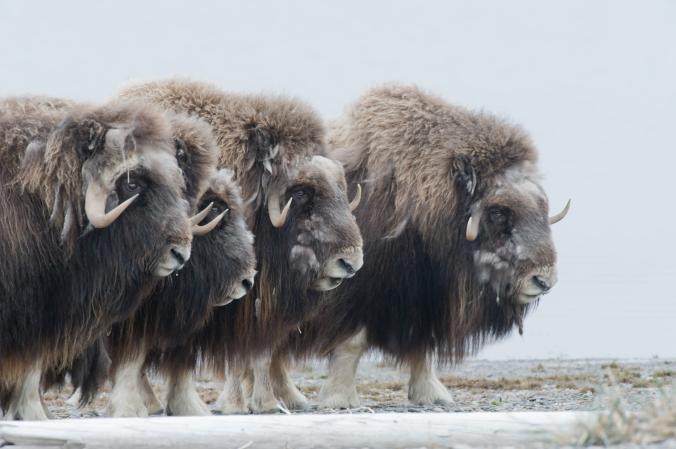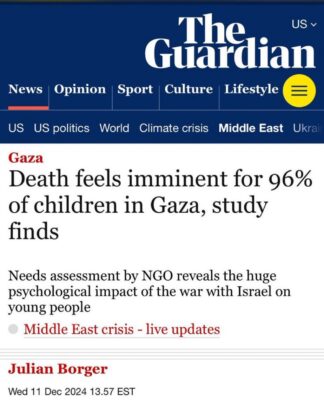Arctic ice is getting thinner as the planet warms.
PHOTOGRAPH BY RICH REID, NATIONAL GEOGRAPHIC CREATIVE
Severely warm temperatures drove Arctic sea ice to a high of 5.6 million square miles this winter—one of its lowest on record, according to an annual evaluation released Friday by NASA.
Yet even though there was slightly more ice overall across the northern latitudes this winter than during last year’s record-breaking low, scientists saw several troubling trends during the winter of 2017-2018.
During February, temperatures skyrocketed to a wild winter high more than 45 degrees above normal in some areas, sending the North Pole—in the dead of winter, when the region is shrouded in darkness—above freezing for several days. Massive sections of Greenland, normally blanketed by thick, old ice, experienced open water for the first time on record. Much of the Bering Sea off Alaska, and, for a while, the whole of the Bering Strait, was also ice-free, “which is pretty remarkable,” says NASA sea ice expert Alek Petty.
And despite not breaking last year’s record, this winter continued a recent trend of being worse than scientists expected.
“These last few winters have all been above our projections for air temperature predictions and sea-ice declines,” Petty says.
THE ARCTIC’S VULNERABILITY
While climate change is warming the globe, it’s hitting the poles even harder.
And as rising temperatures drive the loss of sea ice, the loss of ice itself ends up making the situation even worse.
“It’s a two-way street,” Claire Parkinson, senior climate scientist at NASA’s Goddard Space Flight Center said in the agency’s announcement. “The warming means less ice is going to form and more ice is going to melt. Also, because there’s less ice, less of the sun’s…solar radiation is reflected off, and this contributes to the warming.”
In fact, through most of the winter, the Arctic was on track to have its worst period ever. The only reason this winter ultimately didn’t break yet another record for low sea ice was that as cooler air in recent weeks allowed ice to reform, the increase near Japan in the Sea of Okhotsk was significant enough to make up for losses elsewhere.
STORMY WEATHER
What happened this winter was that storms from both the Atlantic and the Pacific sent warm water and winds into the north.
Part of the problem, of course, is that those ocean bodies are warmer than they once were. In addition, over time, the Arctic has lost evermore of the thicker, older ice that stabilizes the entire region. That means that the warmth from storm events that pummel the Arctic travels father and does more damage, causing the ice to melt even more.
For example, the big hole in the ice that opened up over Greenland closed rather quickly after the heat subsided. But NASA officials say the new ice is thinner and less stable, and more susceptible to whatever warm spell comes next.
SEE THE WILDLIFE OF ANWR
Musk oxen put up a defensive ring around their young in Alaska’s Arctic National Wildlife Refuge.
PHOTOGRAPH BY PETER MATHER, NATIONAL GEOGRAPHIC CREATIVE
The 180,000-strong Porcupine caribou migrate thousands of miles each year to reach their calving grounds on the coastal plains of Alaska. The calving grounds are threatened by potential oil and gas development.
PHOTOGRAPH BY PETER MATHER, NATIONAL GEOGRAPHIC CREATIVE
An arctic fox, Alopex lagopus, in tall grasses. Its coat is changing from winter white to summer brown.
PHOTOGRAPH BY PETER MATHER, NATIONAL GEOGRAPHIC CREATIVE
Flurries of snow geese drift above the largest U.S. wildlife sanctuary.
PHOTOGRAPH BY LOWELL GEORGIA, NATIONAL GEOGRAPHIC CREATIVE
Migrating birds and a rainbow appear over the Arctic Ocean, along the coast of Alaska’s Arctic National Wildlife Refuge.
PHOTOGRAPH BY PETER MATHER, NATIONAL GEOGRAPHIC CREATIVE
“We recently looked back and were able to show that extreme warm periods have happened before in the Arctic, even 100 years ago,” Petty says. “But what we’re seeing is that there’s an increase in the frequency of these incidents, they are lasting longer, and the impact on sea ice is even greater. The storms are simply eating away at the sea ice more than they used to.”
The key, of course, is that all these ice declines are having immeasurable impact on the globe—increasing heat and moisture in the atmosphere, changing mixing and circulation of the Arctic ocean, affecting what and where things live, even altering the global climate system. And these shifts will only get worse until and unless humans dramatically scale back carbon dioxide emissions from the burning of coal, oil, and gas.
“The changes are just going to get more severe,” Petty says.


























